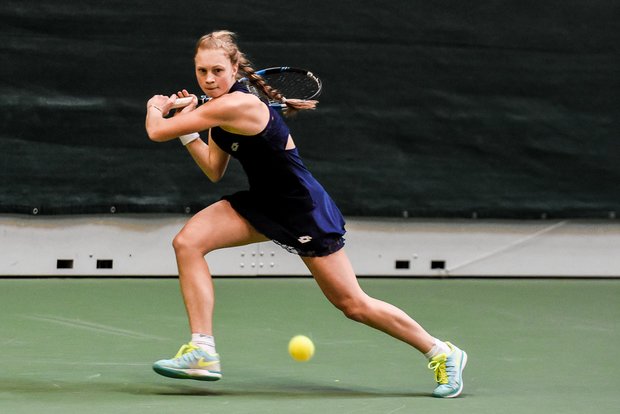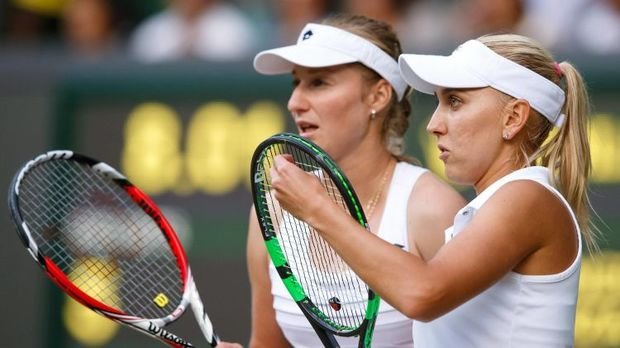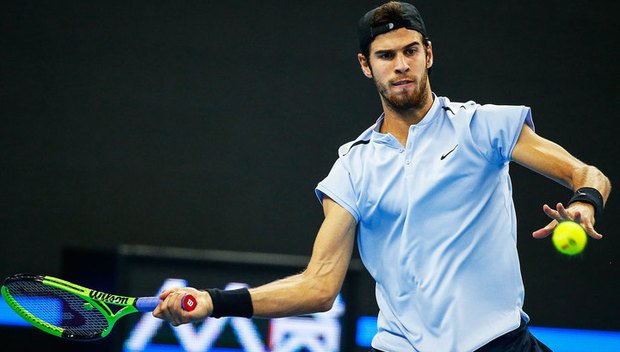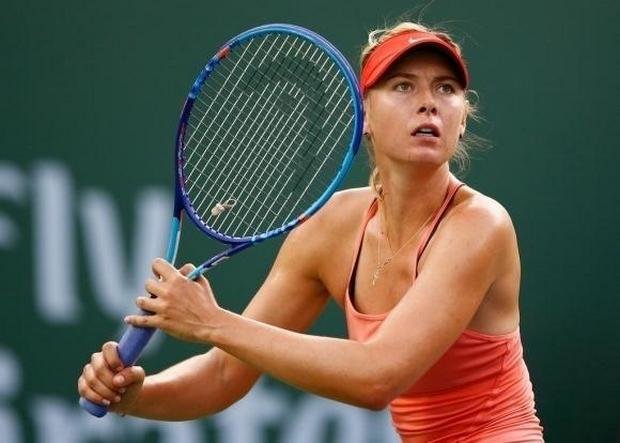Shamil Tarpischev: ''The US Tennis Federation’s budget is $225m, while we do with $5m''
The president of the Russian Tennis Federation on competition with leaders, testing among kids and advice to Federer
Shamil Tarpischev is always in great demand in Kazan. The youth try to take a photo with the tennis legend, coaches rush to tell how they are doing. But there were interlocutors who shared their own problems like Walkers to Lenin. It became the first question for the president of the Russian Tennis Federation in a big interview with our newspaper.
''Promising tennis players from low-income families will get the support''
Mr Tarpischev, do you have authority and leverage to meet requests of all the needy as a mover and shaker of Russian tennis?
Now the federation will implement a programme to support low-income young tennis players whose budget is about $1m a year. This became possible thanks to the help of one of the friends of the federation, I don't have the right to make his last name public. But not just children from low-income families will get targeted support but those who are promising, which will be proved by corresponding scientific testing.
A professional tennis player's testing schemes become better year after year. Apart from it, we do genetic blood research. This can define a child's makings whom people want to make a tennis player – but he can have the makings of a chess player, for example. It's possible to find the dominant thanks to which he can develop and look at what can stop. If according to this testing the child is found promising to play tennis, of course, he should be helped as much as our possibilities allow it.
Is it possible to keep these promising children later so that they won't scatter to foreign academies after leaving the juniors' tennis?
The paradox of development of our sport might be that the departure of juniors to foreign academies looks like panacea. Why? Tennis in central Russia is a seasonal sport when its development in the open air is limited to 5-5,5 months. Then nature takes its toll, and outdoor classes become impossible. And if the same 14-year-olds don't stop going to foreign academies, they will just fill the courts and won't give the next generations a chance to train.
Won't we consequently lose promising athletes in the future?
Nowadays there have been signed contracts with sixty promising tennis players who are in the country's national teams. The tennis development programme will include in the future only those who will sign an agreement with the federation, as parents sometimes are ready to take a young tennis player in search of a better life. If such people exist, please, work on your own, without any help from us.

''If the same 14-year-olds don't stop going to foreign academies, they will just fill the courts and won't give next generations a chance to train.'' Photo: Oleg Tikhonov
''The situation looks like a conflict of interests''
Let's switch from our affairs to world pro-blems. It's planned to reduce the number of tournaments in 2019, this reducing the number of tennis players in the ATP and WTA rankings. What do you think of these novelties?
I will note that it's only a plan at the moment. And I think it's early to talk about it. I think such novelties will cause doubts, as a road to professional tennis will stop resembling a road and turn into a narrow path.
Your colleagues explained to me that these novelties, on the contrary, will sift those who have a tiny score and ''litter'' the world ranking.
You've been misled. It will become harder to become a pro. Previously, a girl would spend three years and a boy five years on it. The possibility of getting to tournaments that will bring points in the world ranking will reduce now, this will take a junior up to seven years on average to become an athlete, and many people will simply fall out of the race.
We should also explain the novelties that are to affect particularly the Davis Cup and the Fed Cup. We need to understand that tennis has three organisations holding tournaments: men's ATP, women's WTA and the International Tennis Federation. The latter is the weakest among the above-mentioned ones. It almost doesn't have anything significant, though it's supposed the International Tennis Federation is responsible for Grand Slam tournaments. But this is not true, national tennis federations of Australia, England, the USA and France hold these competitions, and the International Tennis Federation doesn't receive any dividends from them.
So the International Tennis Federation decided to include the novelties to tournaments that enjoy its patronage, it's the Davis Cup and the Fed Cup, which were losing sponsors. Only one of four leading sponsors has remained over a year – BNP Paribas, which also was considering to exit the tournament due to reducing interest in it. This is how the proposal to hold competitions in one place and at one time appeared.
Back to the transition tour the question was about. The problem of young tennis players isn't that they don't have mastery, they lack stability. Because of it, a junior could win somebody from the top 10 but lose to the number 200 in the world in the next match. The unformed nervous system is the problem, moreover, his road to becoming a pro is going to be made narrower. I think this way is wrong.
2019 is a pre-Olympic year, consequently, we should start thinking of licences, the same steps like the doubles Yelena Vesnina – Yekaterina Makarova created before Rio that won a gold then. Has the job to Tokyo 2020 already begun in this sense?
The situation looks like a conflict of interests from the very beginning. To become a strong doubles player, a player should play only in doubles. But the problem is to be in the team of Olympians, which directly depends on the current singles rankings. This makes to play in singles, though ''makes'' is a wrong word here. One should participate in singles in many tournaments, though the least number of competitions can be chosen – 18 tournaments. But it doesn't mean, for instance, a third of them will be failed during the season. Consequently, one has to apply for at least 30 tournaments, which is about 34-36 weeks a year. But focusing on singles, how can one count on a high doubles rankings?

''To become a strong doubles player, a player should play only in doubles. But the problem is to be on the team of Olympians, which directly depends on the current singles rankings.'' Photo: eurosport.ru
How did leading world doubles solve this problem?
I raised the problem of specialisation in doubles when Asians didn't start focusing on them, preparing doubles players from the beginning, from an early age. In general, I think doubles are trained wrongly. One should train according to what a person has, an athlete's individual peculiarities.
But we don't have a budget for it. For instance, the US Tennis Federation's budget is $225m, while we solve our problems having $5m at our disposal. This doesn't allow us to fully develop those promising tennis players who win all team competitions in the juniors in many aspects. Why? If the preparation of a young athlete costs about $50,000, a professional spends €200,000 a year. This is why only those who are in the top 80 in the world can earn from tennis.
But here we should say that only Russia has state-based tennis preparation in the whole world. We have the Russian State University of Physical Education, Sports, Youth and Tourism in Moscow, the Moscow State Academy of Physical Education in Malakhavka near Moscow, the Lesgaft university in Petersburg and the Volga Tennis Academy in Kazan. This also bears fruits, as we should talk about systematic training. We work with targets, while many tennis academies continue working ''with a flow''.
Can a tennis game in summer in Asia, in the heat, with high humidity become a problem?
We've had some groundwork to prepare for matches in the Asian continent since the Soviet era. We continue doing research in this respect. Don't forget the Davis Cup match against Spain, which we held and won in the Far East. Adaptation, recovery, nutrition considering the local specifics – this all is familiar to us. If we manage to build courts in the Far East now, we will prepare for Tokyo there. If not, we will find a place in Asia.

''Nowadays Karen Khachanov has already formed as an athlete and is ready to play. Daniil Medvedev still lacks muscle mass, he needs more time. While Andrey Rublyov was treating an injury getting into his best shape.'' Photo: vesti.ru
Could you characterise young leaders of Russian tennis?
Nowadays Karen Khachanov has already formed as an athlete and is ready to play. Daniil Medvedev still lacks muscle mass, he needs more time. While Andrey Rublyov was treating an injury getting into his best shape.
We've not chased a result in the Davis Cup in the last years but tried to complete the process of preparation of our talented youth. But a drawback of the current youth is that they listen little or have bad hearing. Simply explaining some things trying to deliver them to a pupil is more complicated than when he goes through it first-hand. For this reason, we dedicated time to gain this experience. For instance, I will repeat that we won Spain in a match that was in Vladivostok. In addition, this game became first in history when Spain lost holding the lead 2-0 during the match.
''Now women's tennis doesn't have leaders''
Just three years ago you brought a completely different team with Gabashvili, Kravchuk to Kazan. Does it turn out that you're not focusing on them now?
Playing at the top 10 level, they can do it. Talking about wins in Cups, no. As for women, there is plenty of young players. There is Daria Kasatkina, she is bright but at the moment she is lacking speed endurance and she isn't looking quite well in matches with hitting players. There is Anastasia Potapova, others, but there aren't any leaders.
Maria Sharapova?
Masha will start preparing for the Olympic Games too. If she doesn't lose speed, nobody will be able to beat her. I will note that now women's tennis doesn't have leaders, and Masha can win in good circumstances.

''Masha will start preparing to the Olympic Games too. If she doesn't lose speed, nobody will be able to beat her.'' Photo: theplace2.ru
How could you comment on the behaviour of Serena Williams who allowed herself to have a nervous breakdown during the US Open final?
The reasons are psychological. Australian Margaret Court still holds the record for the number of Grand Slam victories – 24. Serena has 23, and she tries to become first in this sense. The doubt that she will catch up with Court grows with every Grand Slam she loses. Now she lost to Simone Halep, then Naomi Osaka, of course, it will be harder for her to win further. If it were a matter of money, Serena would play everywhere. But now she is building her career carefully, reaching the peak only at the Grand Slam she tries to win. It's not the main reason for the breakdown but one of the factors it can be explained with. Ambitions…
''Only two junior Spanish champions became amazing tennis players – Corretja and Nadal''
You've given a lecture to students of the Volga sports academy. What have you focused on in your speech?
On some aspects, including psychological, that we've already mentioned. On specifics of training of young athletes, too. Much can be told about the importance of speed and endurance when training a top-class tennis player. The peculiarity of the young age is that children develop in different ways. Now I will say an important thing for parents of tennis players who want their child to show a good result as soon as possible.
When Rafael Nadal won the Junior Championships of Spain, his aunt Toni (Editor's Note: ex-Barcelona FC player Toni Nadal) asked who of the similar champions achieved good results in their career later. It turned out it was only Álex Corretja. The other Spanish champions aged 12-14 left the orbit. Not the best but more physically developed players win in childhood. This is why I think an early specialisation isn't very good. Big loads lead to traumas. A correction of loads is needed, not only tennis but maybe it's feasible to correct loads with artistic gymnastics, even rhythmic gymnastics. Especially the vertebra, as it's the first thing children have problems with. As turning to one side in serve does harm to a child's vertebra, first of all. In the end, children not only stop playing tennis but also gets back problems.
At what age do you think a child can start playing tennis?
There were regulations in the Soviet era according to which a child younger than 7 years wasn't accepted to the class. Now, again because of early specialisation, a 4-year-old can be accepted. Though my experience shows that a child should be prepared to play tennis.
As a rule, it's better doing this via swimming and ice skating. Ideally, speed skating. But children, unfortunately, aren't interested in just skating. And this is why we do figure skating, it's possible to prepare a child's ligaments, joints, improve coordination, agility, endurance in classes. Professional swimming makes muscles flexible and improves the respiratory system. A year spent on skates in winter and in swimming in summer will allow a child to come to the tennis class more prepared.

''There were regulations in the Soviet era according to which a child younger than 7 years wasn't accepted to the class. Now, again because of early specialisation, a 4-year-old can be accepted. Though my experience shows that a child should be prepared to play tennis.'' Photo: tennis-spb.ru
''If habitual tennis doesn't bring a result, one should look for other ways to achieve the goal''
In general, the formation of an athlete depends on two aspects: what he was given by nature and the environment, what surrounds a person – coaches, courts, the surface and so on. By the way, sports psychology has another interesting moment. As a rule, people who mastered some elements start doing only them in stressful situations, they aren't able to reprogramme their actions.
What a threat does it pose?
Talking about concrete examples, I will remember the opposition of Arthur Ashe and Björn Borg. At that moment, Ashe has tried to reach the net almost in every rally. Journalists asked him why stuck to these tactics if the score of his opposition with Borg was 4-11. Ashe replied if he didn't try to play in such a manner, he would have lost all 15 matches. Because we all love to play what's habitual, comfortable, in other words, favourite tennis. But if it doesn't bring a result, one should look for other ways to achieve the goal.
Or Roger Federer. He couldn't play Nadal for some time at all, he often lost to him, he always did on clay. Once we got into conversation with Roger, I said: ''You win one a half set against Rafa, then you don't have enough focus on long rallies, which are more habitual for Nadal. Go to the net.'' Roger said he couldn't do it physically. Then he started to apply not for all competitions but became selective, for Grand Slam tournaments, and started to play there against Nadal on the court, not on the back line. The score in their personal oppositions changed in favour of Federer as time went by.